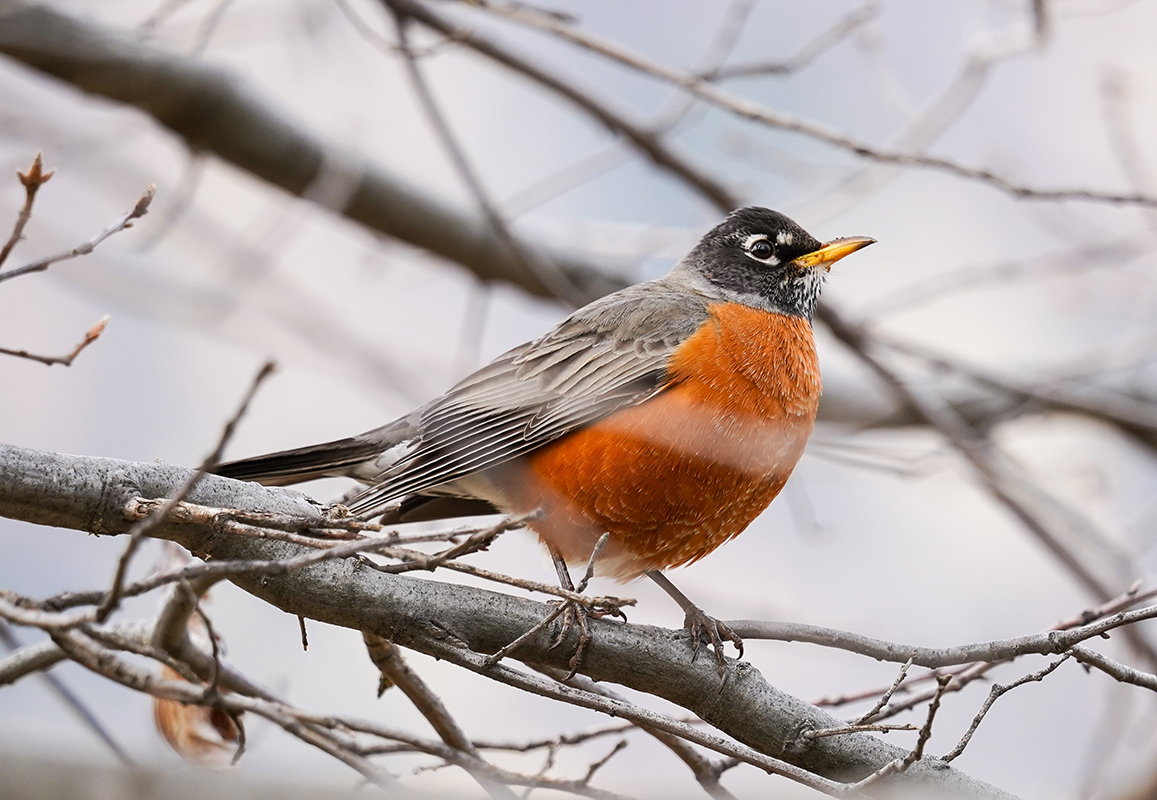American Robins (pictured) are commonly spotted on lawns across North America, where you often see them tugging earthworms out of the ground.
Lethbridge College biological can now track robin flight patterns.
The system Lethbridge College now has access to it called Motus and was developed by Birds Canada. Motus is an avian tracking system which allows Birds Canada to track migratory paths and flight patterns among certain species.
The species being tracked are tagged and followed using the Motus program which will now be possible within the biological sciences program at the college. Access to this system will help students in the ornithology class, which is the study of birds, under biological sciences instructor Shane Reorsma where they will be tracking American robins to understand their flight patterns.
Reorsma says the Motus system offers more than simply understanding flight patterns in certain species.
“There’s have been major declines globally in bird populations for a wide array of different reasons. Right? North America since the 1970s, we’ve lost over 30 per cent of our bird species. We don’t know exactly why all those bird species have declined,” says Reorsma.
According to statistics from BirdLife International, a company that works for the conservation of birds and their habitats, approximately 223 bird species are critically endangered, 447 are endangered and 773 are vulnerable to population decline. Currently the largest threats to bird populations are agriculture and logging.
Birds Canada has Motus stations across the nation and now Lethbridge College has its own station on campus atop the Cousins building where ornithology students will be assisting in recording the data collected. While studying the migratory routes of birds offer insights for researchers, the information Motus collects is readily available to the public and bird watchers to access. Local birder David Scott says the more we understand the birds, the more we can help their populations.
“For some species, they’re pretty scarce and understanding their migration patterns could be helpful for knowing where and when to observe the birds themselves,” says Scott.
Not only does Motus help provide information regarding flight paths in birds, but it also provides other data that is crucial to specific species.
“What are the vectors of immediate mortality in some of these populations? Why are these populations declining right? So good portion of that answer probably lies in their migratory routes, right? So, we can figure out where they migrate when they come back. Where do they die? What are the pinch points for mortality,” says Reorsma.
Birding and the information found with the Motus system can tie in together, as both works to achieve the same goal: understand where the birds are and what changes in their migrations. As Scott says birding is more than a hobby, it’s a social activity but it also contributes to citizen science as well.
Roersma says that he is looking forward to developments with the Motus system and that the college is hoping to initiate their own projects using the technology. For now, Lethbridge College biological sciences is using Motus to track American Robins but look to expand to other species that have noticeable changes in their migratory paths in the future.
If you are interested in developments in Motus or want to learn more about bird migratory paths you can visit motus.org.

